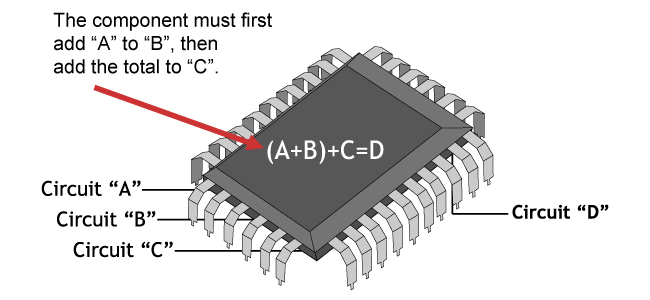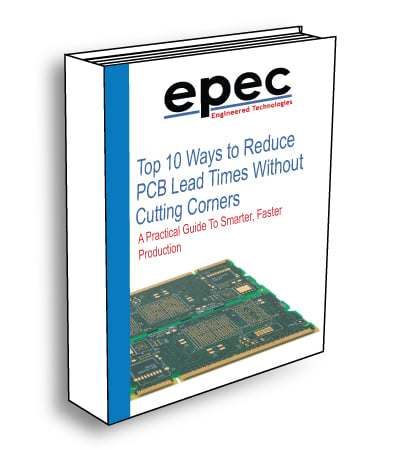Controlled Impedance Designs
As circuit board signal switching speeds increase, PCB designers in this day and age need to understand and control the impedance of printed circuit board traces. Short signal transition times and high clock rates of modern digital circuitry require PCB traces to be considered not as simple connections, but as transmission lines.
Think of PCB traces as short cables, precisely constructed, connecting the devices mounted on the board where the PCB trace, like the coax inner conductor carries the signal and is insulated from its return path (in this case a ground plane) by the board laminate. This is shown as a cross section in the micro-strip configuration.
Controlled Impedance on Printed Circuit Boards
As the speed of signal switching on a circuit board increases, the electrical properties of the traces carrying signals between devices become increasingly more important.
A Very Simple Example:
Electrical Impedance: A measure of opposition to time-varying electric current in an electric circuit.

The Problem: "A", "B" and "C" signals all reach the component at the same time.
The Solution: Apply Impedance to Circuit "C" to slow the signal enough for the component to first calculate ("A"+B").
Similar with a cable, the signal encounters a change of impedance arising from a change in material or geometry. Part of the signal will be reflected and part transmitted. These reflections are likely to cause aberrations on the signal which may degrade circuit performance (e.g. low gain, noise and random errors). In practice, board designers will specify impedance values and tolerances for board traces and rely on the PCB manufacturer to conform to the specification.
When rise times continue to reduce, inevitability the number of traces requiring impedance control will continue to increase. Where impedance control is needed it is important to control it accurately, calculating it with the most representative cross-section we can create.
Where our experience helps in control impedance designs...
With over 70 years of experience manufacturing PCB’s, Epec Engineered Technologies has developed several key processes to help us better control impedance through our manufacturing process.
Incoming Inspection and Vendor Material Management Process
While working with our key vendors we have developed processes which allow us to be sure that the material we receive (laminate, pre-preg, copper foil) is consistent in its thickness and other properties. Thickness variances from raw materials are one of the main challenges when trying to produce controlled impedance parts.
Laser Direct Imaging Equipment (LDI)
LDI equipment eliminates the variances in trace width due to film expansion/contraction along with creating a more defined image on the copper which makes the trace etch with a finer precision.
Etch Equipment Configuration
Once a controlled impedance board is imaged, it must go into the etcher. The goal is to develop a configuration on an etcher (Speed, temperature, pressure, nozzle direction and angle, etc.) to minimize undercut. With our experience in the PCB industry, Epec understands how to manage the etch process to ensure that we meet the impedance tolerance call out that the customer requested.
Watch Our Controlled Impedance Video Series
Part 1: Understanding the Stack-Up in Impedance Calculations
Part 2: Gerber Data
Part 3: Impedance Validation
Does Your Design Have Tight Impedance Controls?
When your designs call out for tight impedance controls down to +/- 5%, let Epec show you how we can exceed your needs. Maximize signal integrity with precision-controlled impedance. Trust Epec's 70+ years of expertise for unmatched accuracy. Request a quote now to ensure your design's success.
Request a Quote Request Design Support Request More Information



